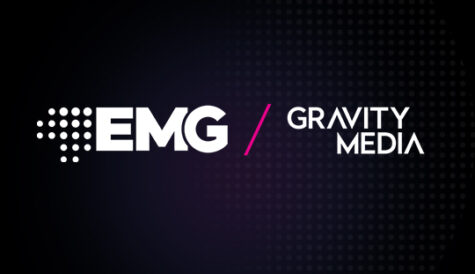Five Facts about super-aggregation
What is Super aggregation?
Super-aggregation is the bundling of online video apps and direct-to-consumer streaming services along with traditional pay TV offerings in one unified single user-experience hub.
The rise of super-aggregation has been the result of the declining pay TV and cable market which has driven consumer-facing service providers such as telcos, pay TV operators, and potentially other industry players to push forward a new type of model. A tool which helps pay TV operators and cable networks compete within the increasing competitive SVOD market.
Liberty Global’s pay TV and broadband operator, Virgin Media, is an example of a super aggregator, with TV packages that includes access to its own TV service and a bundle of streamers such as Netflix and Disney. The service provider has also recently expanded on its super-aggregation model, fully integrating its FAST channels into its pay TV platform Virgin TV.
UK telco and TV provider BT is another super aggregator with bundled offerings of Netflix and Sky Group’s streamer NOW, as well as Prime Video via its mobile product EE TV. Beyond the UK, Swisscom is a notable super aggregator with its blue TV bundle which provides customers access to Disney+, Paramount+ Sky Cinema, and the telecom’s dedicated streaming offering blue SuperMax.
Sky has also taken a lead with super aggregation with Netflix bundled in the operator’s TV offerings, and Disney+ offered as an add-on to TV services. The service provider also hard-bundles Warner Bros. Discovery’s discovery+ through its SkyQ TV platform.
Other examples of super aggregation include Amazon’s Prime Video Channels where users can sign up for ad-free versions of Max and Paramount+ via the Channels offering. While in this case Amazon acts as an aggregator, its Prime Video can also be aggregated itself by pay TV providers.
What advantages does super-aggregation provide for consumers and content providers?
A key benefit for super-aggregation is that it provides a simplified user experience for the consumer when all apps are situated in one place within a single consistent user interface. It enables consumers to have access to a universal content discovery page with a single login where they don’t need to leave an app and enter a new destination to find content from different services. This also provides easy access to content with universal search and personalised content recommendations.
Super-aggregation can also be a more affordable option for consumers than subscription stacking where a user has separate subscriptions for each streaming service. A soft bundle model offered by operators provides customers with an extended trial period for a content service for free or a discounted price from a telco, while a hard bundle offering can grant customers a discounted price for a streaming service for the whole duration of the contract and revenue is shared. Most of all, viewers get to experience the best of both worlds with access to pay TV content and discounted streaming content which can defer both subscription churn and cord-cutting.
What are the pitfalls of super-aggregation?
The rise of super-aggregation has been accompanied by growth in illegal super-aggregated IPTV services. Illegal super-aggregated streaming operators are luring consumers with professionally packaged and seemingly legitimate offerings. Consequently, these criminal-ran services pose an increasing threat to the legitimate super-aggregators. DTVE’s 2023 Survey found 92% of respondents believe illegal super-aggregated IPTV services are a threat to revenue security. Also, research carried out by video and broadband software provider Synamedia detected there were nearly 30,000 pirate networks worldwide.
Another challenge for super-aggregators is connected to delivering the ultimate goal of universal content discovery, which is best achieved with control of user data. However, access to data can be limited, with content providers often not wanting to share with other platform operators.
What do service providers need to deliver super-aggregation?
Super aggregators need to deliver a comprehensive set of apps. They also need to make a more compelling offer for consumers than subscription stacking, perhaps with a single-priced offering that would include leading streaming services such as Netflix, Disney+ and Amazon Prime Video.
It’s also important for operators to leverage technology platforms which enable differentiation through the UX and search and recommendation across the multiple apps. A universal search feature across apps along with personalised content discovery and recommendation would be a major differentiator for super-aggregation. However, it can become a challenge for providers to access data and strike agreements with content partners on how to surface content.
Super aggregators require a flexible technology stack to handle an increasing volume of content and a large user base. Operators often opt for operating systems such as Google’s Android TV or RDK, which both offer extensive app ecosystems. This enables super-aggregators to have technical access to the same wide range of apps and potentially to service-bundling opportunities.
According to Omdia, Android TV can merge the traditional operator linear content experience with a full and open Google Play Store-based app-driven OTT consumption experience, something that may be particularly attractive to smaller pay TV operators,. RDK on the other hand may be more appealing to larger operators, such as Liberty Global and Comcast, as it requires a greater level of in-house development to but does not cede control to Google.
What is the future of super-aggregation?
There is increasing demand from consumers for a full range of direct-to-consumer offerings, incentivising operators to move to super-aggregation. DTVE’s most recent industry Survey revealed that 64% of service providers have adopted or intend to adopt super-aggregation as a TV strategy. Omdia meanwhile reported that, in the first quarter of 2023, there were a total of 1,648 partnerships between SVOD providers and telco operators or pay TV distributors. The research outfit highlights that aggregation is not a new phenomenon in the market, with such partnerships appearing from the early 2010s. However, super-aggregation accelerated towards the end of that decade, with SVODs now a key feature in telco bundles.
As more and more pay TV operators adopt super-aggregation as a strategy this could lead to the market becoming overcrowded and smaller or niche streaming services could be neglected.
However, Omdia also predicts that the future will see multiple telco bundles consisting of several SVOD services sold at a discount, together with broadband connectivity. Major SVODs meanwhile may prioritise ad tiers for partner bundles amidst the shift to ad-supported model.




